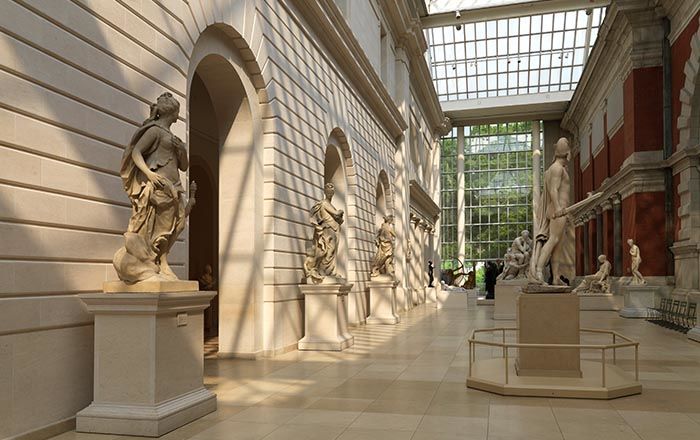Gothic Revival Armchair
Designer Gustav Friedrich Hetsch Danish
Not on view
This chair, and the suite of seat furniture to which it once belonged, are the earliest known examples of Gothic Revival furniture in Denmark. The suite, of which one pair of armchairs and a sofa are in the in collection of the Design Museum in Copenhagen and another pair at Frederiksborg Slot,was commissioned around 1855, shortly after King Christian IX, then heir presumptive to the Danish Crown, took possession of Bernstorff Slot as his summer residence. The chairs were designed by the highly significant Danish architect of German descent, Gustav Friedrich Hetsch.
Hetsch was born Stuttgart in 1788, studied in Tübingen and Paris, where he trained under the neo-classical architect Charles Percier. With the disruption of the Napoleonic Wars, Hetsch swapped Paris for Rome, where he met a number of Danish artists, including the sculptor Bertel Thorvaldsen, who encouraged him to move to Copenhagen in 1815. There, Hetsch lectured at the Royal Danish Academy of Fine Arts and began to work with the principal Danish royal architect, Christian Frederik Hansen, whose daughter, Anette, Hetsch married in 1823. Hetsch became an immensely respected and influential architect in Denmark. In 1828, he was appointed director of the Danish royal porcelain manufactory, Royal Copenhagen. He frequently travelled to France, Germany, and Italy to study the latest fashion in architecture. In 1851 he visited the Great Exhibition of the Works of Industry of All Nations, at Crystal Palace, London, where he saw the work of A.W.N. Pugin. It appears very likely that the furniture conceived by Pugin and his peers, exhibited in the “Medieval Court”, had an influence on Hetsch’s engagement with Gothic design and therefore informed his design for this chair.
The branding underneath the chair rail consists of Christian IX’s cipher, a double C under a crown, and the number 7, presumably referring to room no. 7 at Bernstorff Slot.
